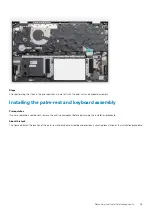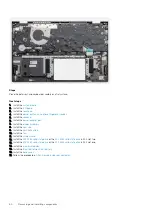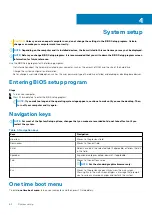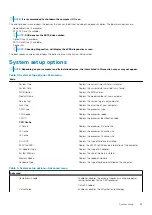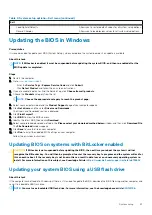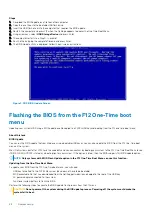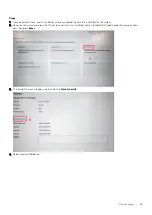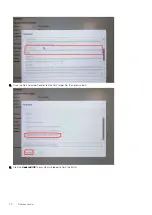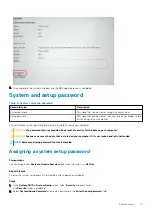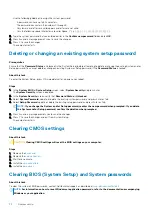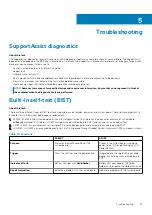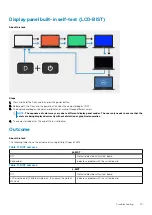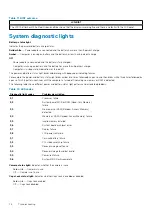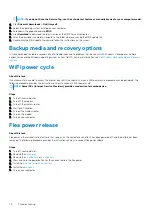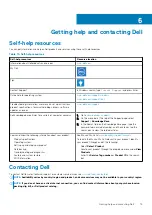
Troubleshooting
SupportAssist diagnostics
About this task
The SupportAssist diagnostics (previously known as ePSA diagnostics) performs a complete check of your hardware. The SupportAssist
diagnostics is embedded in the BIOS and is launched by it internally. The SupportAssist diagnostics provides a set of options for particular
devices or device groups. It allows you to:
•
Run tests automatically or in an interactive mode.
•
Repeat tests
•
Display or save test results
•
Run thorough tests to introduce additional test options and provide extra information about the failed device(s)
•
View status messages that indicate if the tests are completed successfully
•
View error messages that indicate if problems were encountered during the test
NOTE:
Some tests are meant for specific devices and require user interaction. Ensure that you are present in front of
the computer when the diagnostic tests are performed.
Built-in self-test (BIST)
About this task
There are three different types of BIST to check the performance of display, power rail, and system board. These tests are important to
evaluate if an LCD or system board needs a replacement.
1. M-BIST: M-BIST is the system board built-in self-test diagnostics tool that improves the diagnostics accuracy of system board
embedded controller (EC) failures. M-BIST must be manually initiated before POST and can also run on a dead system .
2. L-BIST: L-BIST is an enhancement to the single LED error code diagnostics and is automatically initiated during POST.
3. LCD-BIST: LCD BIST is an enhanced diagnostic test that is introduced through Preboot System Assessment (PSA) on legacy systems.
Table 10. Functions
M-BIST
L-BIST
Purpose
Evaluates the health condition of the
system board.
Checks if the system board is supplying
power to the LCD by performing an LCD
Power Rail test.
Trigger
Press the <M> key and the power button.
Integrated into the single LED error code
diagnostics. Automatically initiated during
POST.
Indicator of fault
Battery LED light with
Solid Amber
Battery LED error code of [2,8] blinks
Amber x2, then pause, then blinks White x8.
Repair instruction
Indicates a problem with the system board.
Indicates a problem with the system board.
5
Troubleshooting
73

